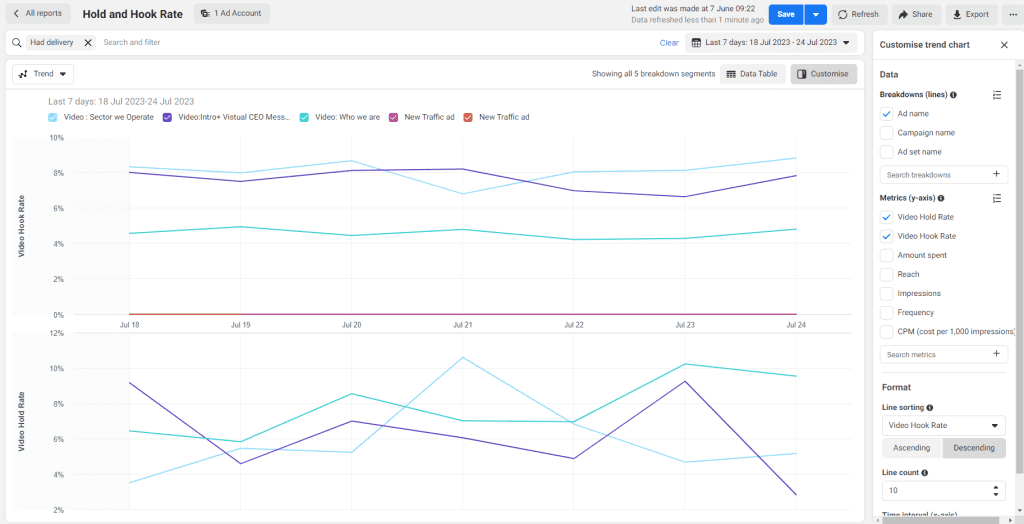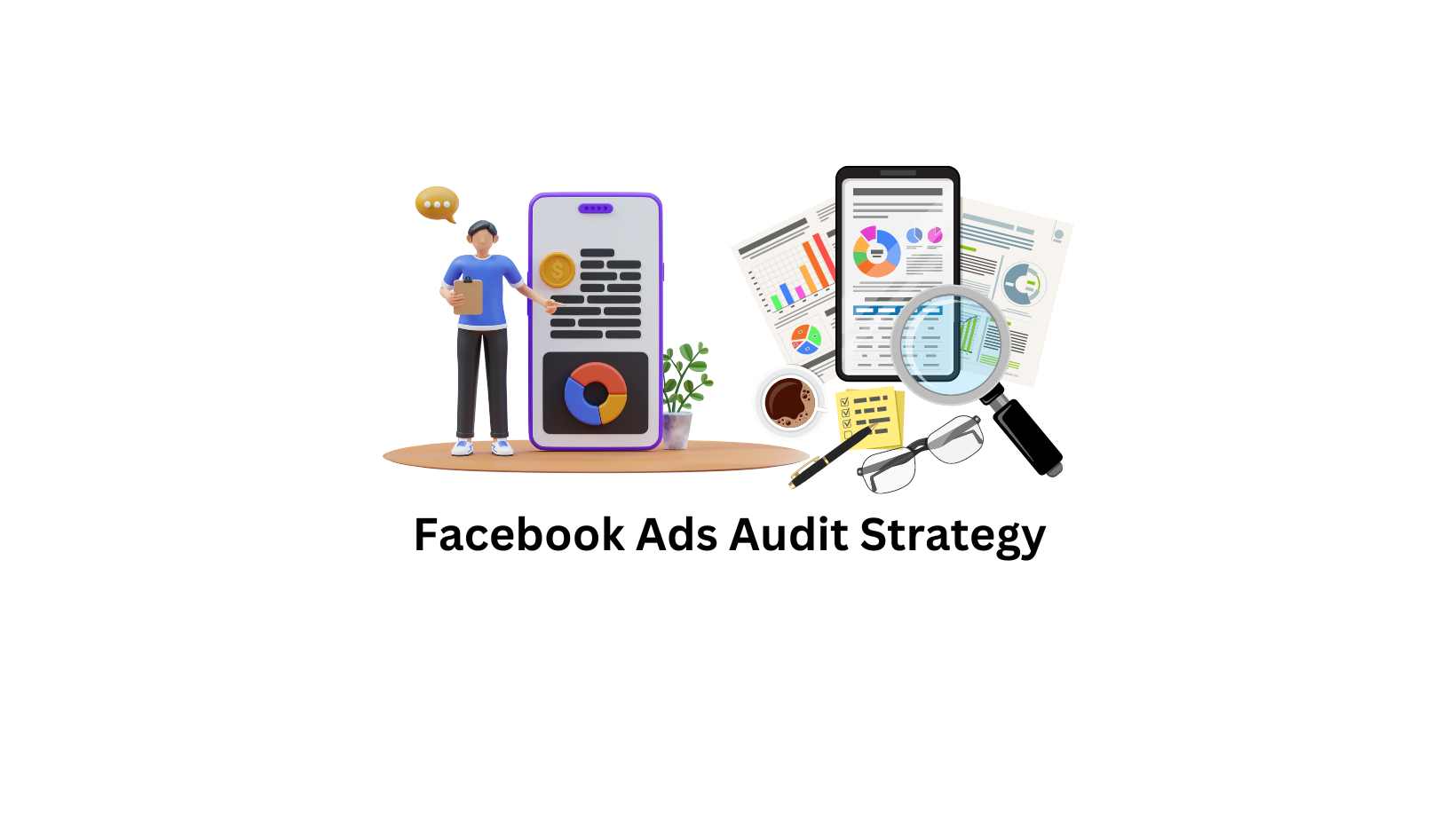Introduction:
Today, we are going to explore the intricacies of the DGAFS (Diagnostics, Goals, Ads, Fouls, Structures) Facebook ad account Audit Strategy. This distinctive approach empowers digital marketers to gain deeper insights into their Facebook Ad Account performances, address discrepancies, and drive the overall success of their marketing campaigns. Spoiler alert – this strategy goes beyond mere creativity or structure; it’s a comprehensive solution for optimizing ad performance.
Facebook Ad Account Audit Process

1. Diagnostics:
The DGAFS approach commences with an in-depth diagnostic process, akin to a medical check-up, but for your marketing account. The focus lies on assessing the status of the pixel, event configurations, and attribution setup – the fundamental facets that drive account performances.
The diagnostic phase aims to scrutinize the inner workings of your campaign and identify any potential issues that may affect your performance numbers. Here, we ask pertinent questions such as:
- Is the pixel transferring the required data appropriately?
- Are any events duplicated, leading to misleading performance data?
- Is the automatic advanced matching feature enabled?
Essentially, anything that could potentially impact your account’s performance metrics should be investigated in this phase. This proactive approach allows for preemptive problem-solving before diving into ad or structural analyses.
2. Goals:
The second step revolves around understanding the goals of your account. Every campaign is driven by unique objectives and performance metrics. It’s crucial to clarify what they are before delving into the intricacies of your account’s performance.
This process involves asking questions like:
- How is the account’s performance being evaluated? Through the Margin Equivalency Ratio (MER)?
- Are there significant differences in margins between different products?
Understanding these nuances provides a robust framework for the subsequent steps in the DGAFS strategy.
3. Ads:
Next, we plunge into the exciting realm of advertisements. It’s a common misconception that account structure solely drives performance. However, the reality is that ad creatives significantly influence the success of a campaign.
This phase involves evaluating the diversity of ads and whether the previous buyer has meticulously set up the ads for success. Here, we ponder upon questions like:
- How is the product catalog being utilized?
- Is there adequate ad diversity, particularly with image-based advertisements?
- Are post IDs being shared to leverage engagement?
- Are the ad assets sized correctly for each placement?
- How distant are the top-performing ads from the set goals?
4. Fouls:
As we navigate through the world of advertisements, we often encounter errors or ‘fouls’ that have potentially inhibited performance. Unfortunately, these are often overlooked by the client or the previous agency and have been subtly swept under the rug.
Common foul examples include:
- Image crops cutting off overlays
- Copy typos causing confusion or miscommunication
- UTMs (Urchin Tracking Module codes) not added to ads
- Failure to share post IDs where they could have been beneficial
- Ads being mislabeled
Identifying and rectifying these mistakes is a vital part of the DGAFS approach to ensure a streamlined ad performance.
Structures:
Finally, equipped with the insights from the prior steps, we turn our attention to the overall account structure. This isn’t just a superficial glance at the core structure, but a comprehensive look at the testing structure as well.
In this phase, we delve into questions like:
- Is the campaign structured horizontally or vertically?
- How long has the current structure been implemented?
- Are there dedicated campaigns for testing different strategies?
- Is there a robust system to exclude previous customers from retargeting efforts?
- Are strategies like Advantage+ or Cost Caps being utilized?
The structure phase of DGAFS allows for a comprehensive assessment and possible reconfiguration of the account setup, leading to more efficient and targeted campaigns.
Conclusion:
To summarize, the DGAFS approach provides a robust framework for auditing marketing campaigns. By prioritizing Diagnostics, Goals, Ads, Fouls, and Structures, it delivers a comprehensive, detailed analysis that enhances the understanding and performance of marketing campaigns. This approach works for many, and it could work for you too. So why not give it a shot?
Remember, successful digital marketing isn’t about creativity or structure alone. It’s about understanding the intricate components, rectifying errors, and continually evolving strategies to meet your campaign goals.

Hello, I’m Ali Raza, the brain behind Digital Realm Trends.
Hailing from the vibrant world of digital marketing, I’ve honed my skills over years. Based on my experience, I’m here to unravel the complexities of digital marketing, analytics and paid marketing, crafted for individuals like you. Join me in uncovering the power of digital marketing tools and strategies, fueled by experimentation and insights.




